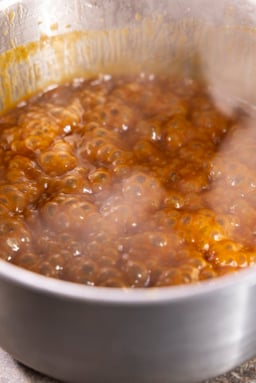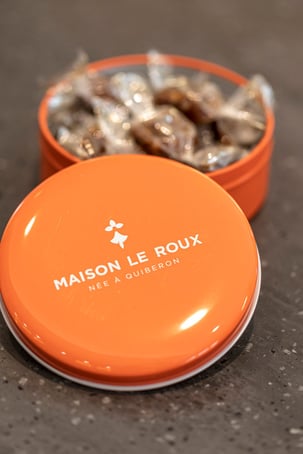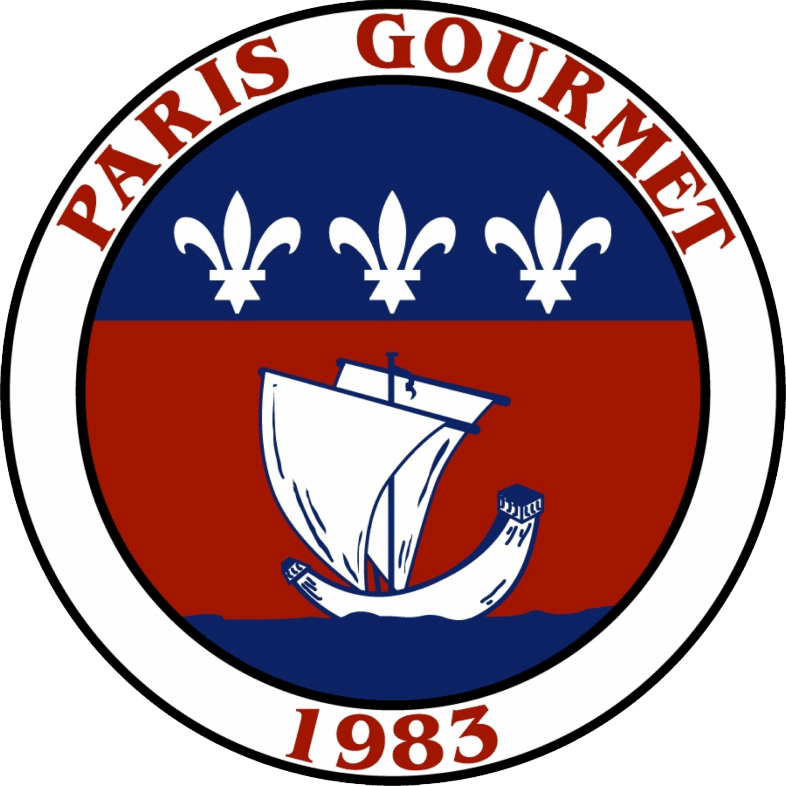Inspired by Caramel
- By Charlotte Brown
- December 06, 2023
Text by Éric Birlouez
Creative ideas and recipes inspired by caramel
Throughout the Middle Ages and until the end of the 18th century, sugar was a precious commodity, very rare and very expensive: for these reasons, like spices, it was perceived as a product that was particularly beneficial for your health.

As you’ll know, caramel is made by cooking sugar at a high temperature (at least 100°C and up to 180°C, depending on the type of caramel desired). The sugar then takes on a brown colour which increases as it cooks; on the other hand, the sweetness of the caramel progressively reduces. The cooking time of sugar depends on your desired usage of the finished product... So, caramel that’s very light (white caramel) is used for glazing petits fours and marzipan fruit, or for making lollipops. Blond caramel (or light caramel) is used for caramelising choux pastry, coating slices of citrus fruits or in the assembly of pièces montées. We use “medium” (or brown, because it is a light mahogany color) caramel for lining moulds, making nougatine, topping puddings, creams, compotes, ice creams, rice puddings, floating islands...
The sugar then acquires a brown color which increases
For toppings, you can also make a brown caramel, which is also used to give colour to consommés, sauces and stews. Above 190°C, the sugar burns and becomes unusable. These days, you can find ready-to-use caramel on the market for flavouring desserts, caramelising moulds or topping desserts. Lastly, caramel is used as a colouring by the food industry (under the code number E150), for example for liqueurs and appetizers, for inexpensive balsamic vinegar and certain sauces.
Caramel sweets
Caramel also refers to a sweet made from a mixture of sugar and glucose syrup, whole or skimmed milk or even fats. These sweets are very old: their composition is in fact very simple, as well as their fabrication (originally, craftsmen would cook the sugar before pouring caramel on an oiled tray before cutting it). Following this, the caramels were flavoured: first with coffee, cocoa and vanilla, then from the 20th century, with lemon, orange, citron, orange blossom, etc. We also made "caramel bars": these thin little squares of 2cm each side were yellow or pink, decorated with a pattern and raspberry or orange scented. They were wrapped in white paper on which was printed a motto, saying or riddle.
These days, caramels can contain hazelnuts, almonds, walnuts or pistachios, and they can also be more soft than hard, depending on the degree of cooking of the mixture and their composition. Hard caramels are made from sugar and milk (fresh, concentrated or powdered) while soft caramels include butter in their composition, as well as milk, vegetable fat, or cream.
The use of the word “caramel” is regulated: it is reserved only for products containing sugar or honey and milk or milk proteins. The name "caramel au lait" can only be used for sweets made using whole milk, and which contain a minimum content of fats and proteins from milk. As well as milk, "cream caramels" and "butter caramels" contain one or other of these two dairy products, excluding any fat of non-dairy origin (again, the regulations impose minimum levels of “dairy” elements).
The use of the word "caramel" is regulated
In “argot de bouche” (slang), having caramels is slang for being afraid. The term caramel is used to refer to a punch, and distributing caramels is theequivalentoffifighting(caraméliser can also be used... this verb means being arrested or spotting a policeman following someone).
Of a great number of local specialties, one of the most famous is Isigny caramel. Since the 18th century, this small Norman city (Calvados) was widely known for its dairy products. Confectionery exists in two forms: a hard caramel, made with crème fraîche from Normandy, and a soft caramel made with fresh milk from Isigny. The sweet was born in 1894 from the imagination of a certain Mr. Dupont who had founded a butter production company in Isigny-sur-mer. Another very well-known soft caramel is salted caramel from Brittany or C.B.S. In 1977, a Breton pastry chef, Henri le Roux, had the idea of creating this sweet using salted butter and hazelnuts.
Among the other "local" caramels is the Négus. Created in 1901 in Nevers to celebrate the visit to France of Menelik II, Emperor of Abyssinia (now Ethiopia), this is a chocolate caramel coated with cooked sugar. Twenty years later, the Charitois was created in La Charité sur Loire (Nièvre). In 1922 in Lapalisse, in the Allier, La Vérité was invented, a cooked sugar sweet with crisp texture filled with a semi-liquid caramel. After the First World War, a confectioner from Vichy created the Moroccans: the name of these soft caramels flavored with coffee or chocolate coated with icing sugar, making reference to the settlers from North Africa who frequented the fashionable spa resort.
Not forgetting the carambar either, this hard cocoa caramel has become very popular, in France and many other countries. Created in 1954 within the company Delespaul- Havez, located in Marcq-en-Baroeul in the Nord department. Its initial success was very much due to the fact that on each sweet had “D.H points” printed on the red and yellow foil, enabling children to receive gifts. It was not until 1969 that the points were replaced by funny stories and riddles.
Originating from the same region, the chuques were created in 1931 by a confectioner from Saint-Amand-les- Eaux. A great friend of the master bell-ringer of the city, the craftsman had the idea of making caramels - the Bells of the carillon - including a chocolate sweet shaped just like a small bell. Other local specialities: niniches from Bordeaux, kanougas from Saint-Jean-de-Luz, canougats from Saint-Étienne... and the list goes on.
 Caramel by Maison Le Roux
Caramel by Maison Le Roux
In the world of caramel, there is one unforgettable name: Henri Le Roux. In1977, the pastry chef and chocolate maker created his salted butter caramel recipe (C.B.S.®) in his pastry kitchen in Quiberon (56).
Three years later, this soft caramel won the prize for Best Sweet in France at the International Confectionery Fair in Paris. More than forty years after its invention, the C.B.S.® is still as popular as ever. Its manufacture remains artisanal with the use of copper cauldrons for cooking. The recipe is a secret, but the main ingredients are sugar, salted butter, almonds, hazelnuts and walnuts. Since then, caramel has always been at the heart of the House, and is often paired with fruit, depending on the season. Last June, the House launched a new range: les Bars et Tablets du Caramélier®, “Whole Fruit Caramels” coated in milk or dark chocolate, still made according to the recipe created by Henri Le Roux. This new concept was born under the impetus of David Wesmaël, M.O.F. glacier, creative director at Maison Le Roux, since January 2022.
